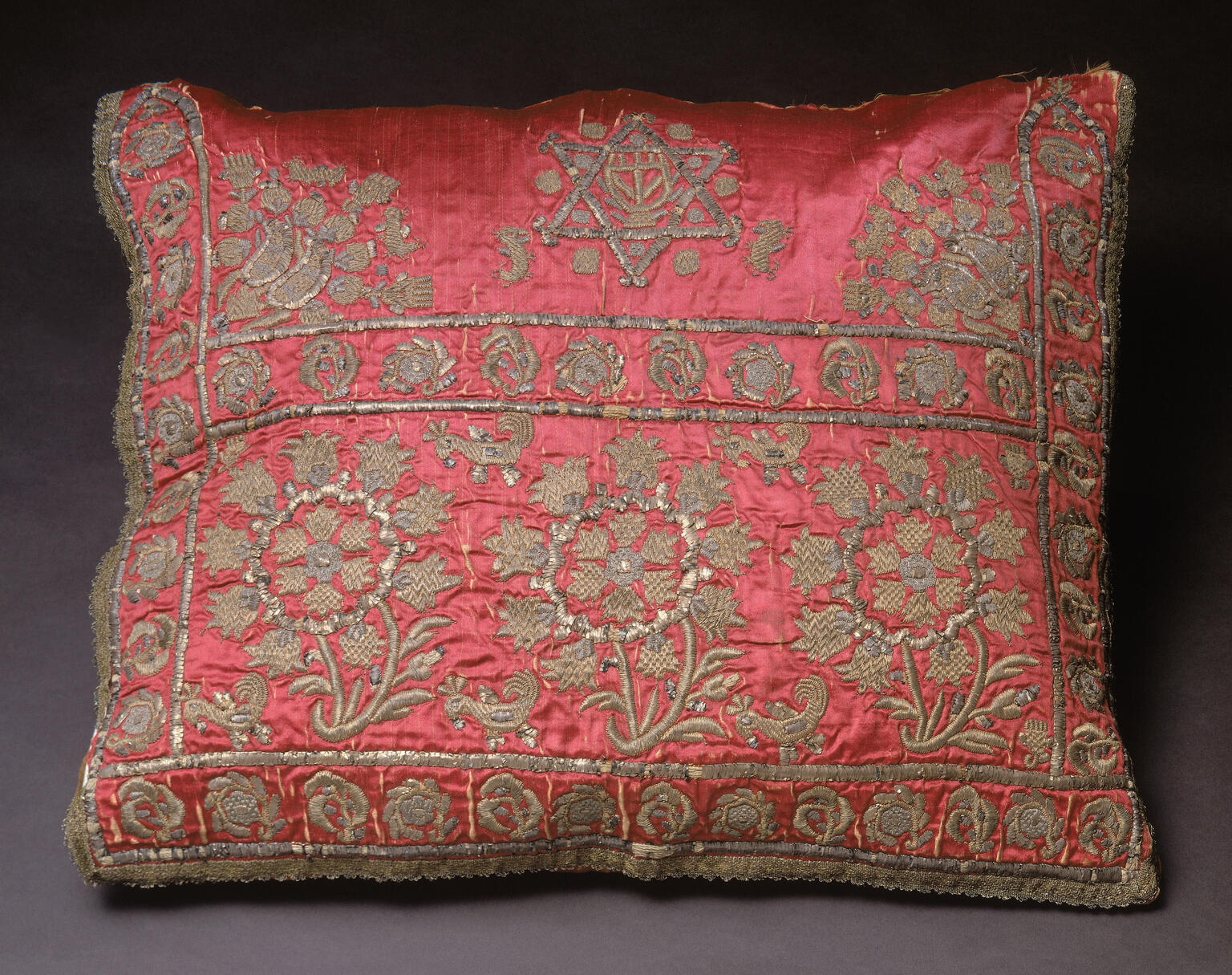Cover for Circumcision Cushion
Artist Unknown
Late 17th or Early 18th Century
This silk cushion cover, embroidered with metallic thread and metallic braid, is thought to have been made in Istanbul. Divided into two horizontal planes, with a narrow border running on three of its four sides, the cover is adorned with floral motifs and animals in metallic gold thread. On the top horizontal plane sits a six-pointed Star of David and a menorah, marking this as a ritual object, probably used for circumcisions.
Credits
Gift of Dr. Harry G. Friedman / The Jewish Museum, New York.
Published in: The Posen Library of Jewish Culture and Civilization, vol. 5.
You may also like
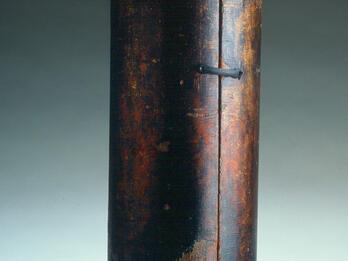
Torah Case (Kaifeng)
This lacquered, cylindrical case for a Torah scroll was made from a combination of wood, bronze, and iron in Kaifeng, China. (The hard-sided Torah case was a Sephardic tradition. It offered more…
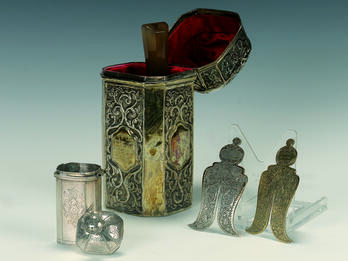
Circumcision Set
This silver circumcision set was crafted in Salonika in the Ottoman Empire. The cylindrical silver casket holds a circumcision knife; its handle is made from agate. A similarly shaped powder box and…

Reader’s Desk
This wooden tevah—a stand or reader’s platform used for supporting Torah scrolls—was made and used in Yemen. It was the practice in Yemen for boys to become active participants in synagogue services…
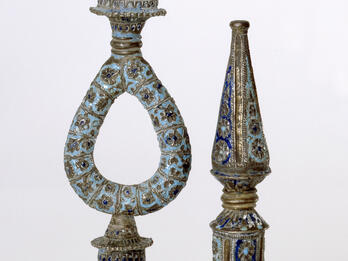
Torah Finials (Iran)
These small Torah finials, decorated with silver repoussé and dark and light blue enamel, originated in Persia. They are further adorned with slender flowers and graceful geometric patterns.
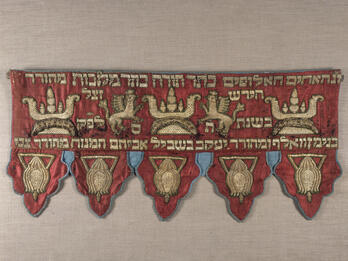
Torah Ark Valance
The kapporet is a short valance hung over the curtain of the Torah ark that first began to appear in Eastern Europe in the late seventeenth century. The griffins and crowns that appear on this kappore…
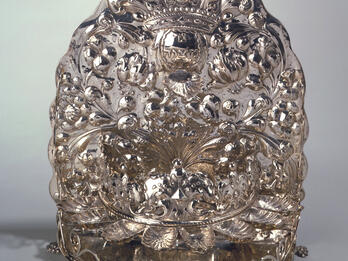
Hanukkah Lamp (Amsterdam)
This silver Hanukkah menorah, made in Amsterdam by the master silversmith Pieter van Hoven, sits on six claw legs and is decorated with intricate leaf and floral patterns. Its front side is further…
Engage with this Source
Related Guide
Early Modern Visual and Material Culture
1500–1750
Early modern Jewish visual culture flourished, with illuminated manuscripts, ornate synagogues, and portraiture alongside increasing non-Jewish interest in Jewish customs and greater Jewish self-representation.
Public Access
Image
Places:
Constantinople, Ottoman Empire (Istanbul, Türkiye)
You may also like

Torah Case (Kaifeng)
This lacquered, cylindrical case for a Torah scroll was made from a combination of wood, bronze, and iron in Kaifeng, China. (The hard-sided Torah case was a Sephardic tradition. It offered more…

Circumcision Set
This silver circumcision set was crafted in Salonika in the Ottoman Empire. The cylindrical silver casket holds a circumcision knife; its handle is made from agate. A similarly shaped powder box and…

Reader’s Desk
This wooden tevah—a stand or reader’s platform used for supporting Torah scrolls—was made and used in Yemen. It was the practice in Yemen for boys to become active participants in synagogue services…

Torah Finials (Iran)
These small Torah finials, decorated with silver repoussé and dark and light blue enamel, originated in Persia. They are further adorned with slender flowers and graceful geometric patterns.

Torah Ark Valance
The kapporet is a short valance hung over the curtain of the Torah ark that first began to appear in Eastern Europe in the late seventeenth century. The griffins and crowns that appear on this kappore…

Hanukkah Lamp (Amsterdam)
This silver Hanukkah menorah, made in Amsterdam by the master silversmith Pieter van Hoven, sits on six claw legs and is decorated with intricate leaf and floral patterns. Its front side is further…


